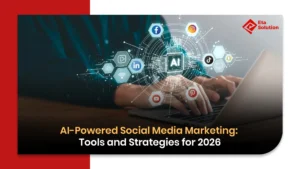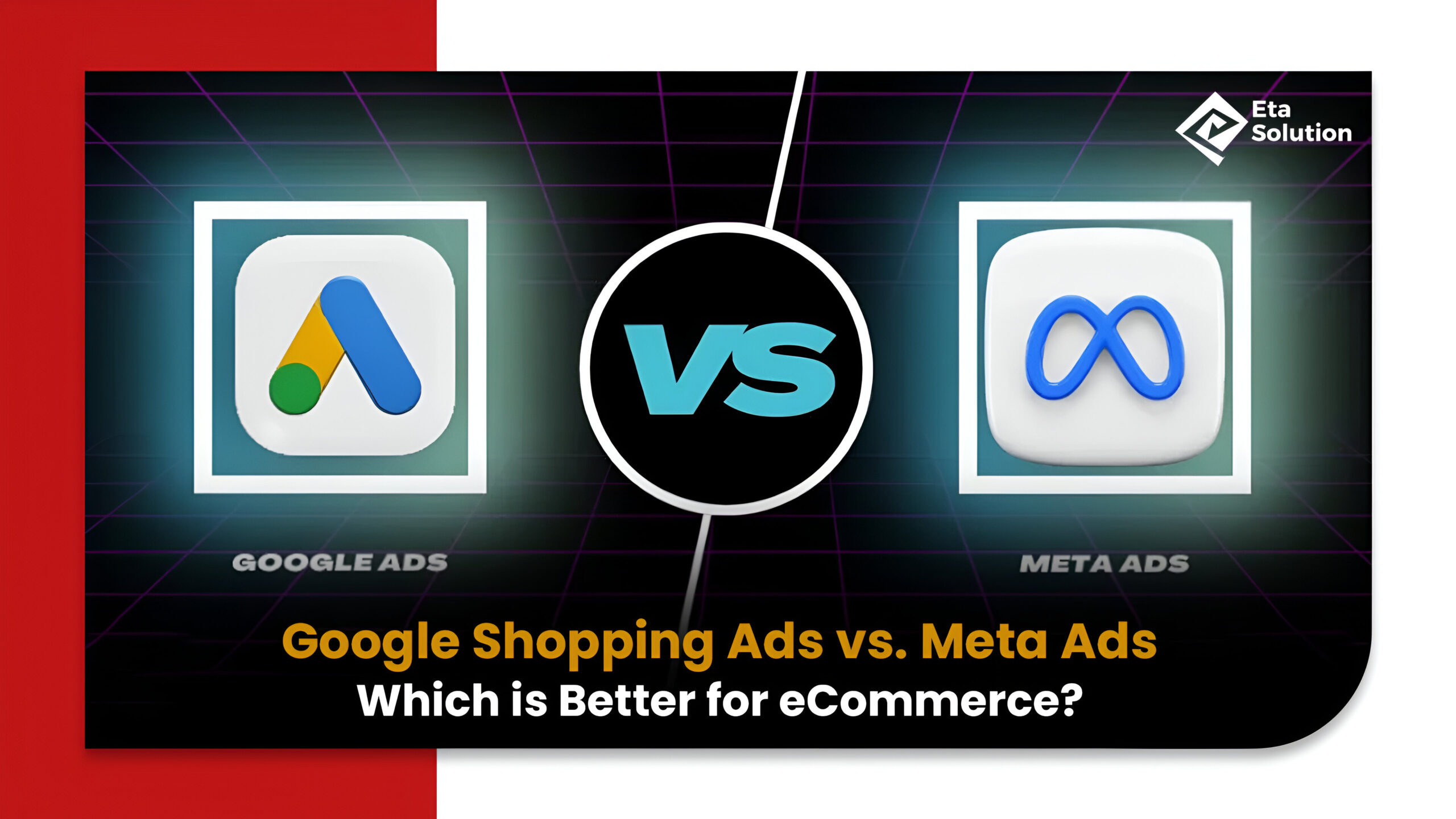
Google Shopping Ads vs Meta Ads: Best Choice for eCommerce?
In the world of online retail, one thing is certain: visibility is power. But visibility alone doesn’t guarantee conversions. For every ecommerce marketing company aiming to drive sales through PPC, the real question isn’t just about reach, it’s about where to invest ad dollars for maximum impact: Google vs Meta Ads?
This article is not another basic rundown. We’ll be digging into data, real-life experiences, variations on the platforms, and actionable insights that successful ecommerce brands live by behind the scenes. Regardless of whether you’re growing your store or revising your ecommerce PPC strategy, you’ll want to know which platform you should be spending on and why.
What are Google Shopping Ads?
Google Shopping Ads, or product listing ads, are image-based PPC ads that show up on top of Google Search Results when someone searches for a product.
Here’s how they work:
- Pulled directly from your product feed in Google Merchant Center.
- Appear with product image, title, price, brand, and reviews.
- Show up for high-intent, keyword-driven queries.
Why they work:
- 65% of clicks on Google Ads for retail go to Shopping Ads.
- They match buyer intent with product availability in real time.
- Good for search-based buyers who know what they want.
But here’s something most brands don’t take into account: Google will automatically serve these ads to long-tail searches that do not always show up in keyword planner tools. This passive long-tail targeting can drive sales without dramatically increasing ad spend.
What Are Meta Ads?
Meta Ads include Facebook product ads and Instagram shopping ads, two of the most visually compelling ecommerce ad platforms available today.
Key features:
- Feed-based or dynamic creatives using Meta Pixel data.
- Letting you advertise across Facebook, Instagram, Messenger, and Audience Network.
- Truly customizable targeting: demographics, interests, behaviors.
75% of all Instagram users have taken an action like visiting a site or buying a product after seeing a product ad.
Unlike Google, Meta Ads tap into discovery rather than search. This makes them incredibly powerful at the top and middle of the conversion funnel, where buyers don’t even know what they want yet.
Targeting Capabilities Comparison
Let’s break it down:
Google Shopping Ads:
- Keyword-driven targeting.
- Can’t Manually Choose Keywords; it relies on your product feed optimization.
- Limited demographic filtering.
Meta Ads:
- Behavioral and interest-based targeting.
- Lookalike audiences from previous buyers.
- Retargeting via dynamic product ads.
Meta’s AI-powered audience expansion, particularly post-iOS 14, is surprisingly effective when fed with quality conversion data. Some ecommerce marketing companies now pair Meta’s behavioral signals with Google’s purchase intent to build synergistic campaigns.
Ad Formats and Creative Differences
Google:
- Product listing ads with standardized design.
- No room for creative storytelling.
- Uniform appearance across all advertisers.
Meta:
- Multiple formats: carousels, reels, collection ads, stories, and DPA.
- Visual storytelling opportunities.
- Instant storefront features via Instagram and Facebook Shops.
This flexibility allows Meta Ads to showcase brand personality, a key factor when selling lifestyle or niche products.
Google Ads and Meta Ads Comparison: Cost and ROI
Average CPCs:
- Google Shopping Ads: $0.66
- Meta Ads: $0.97
But here’s the twist:
- Google Shopping ads often convert higher due to bottom-of-funnel placement.
- Meta Ads have lower conversion rates but better AOV when personalized effectively.
A recent Shopify case study showed a skincare brand achieving 5.2x ROAS using Meta’s Reels + DPA strategy, but only 3.6x on Google. Yet another electronics store reported 8.1x ROAS on Google with only 2.7x on Meta.
Lesson? ROI is product-specific. And platform selection should reflect purchase behavior, not just ad spend.
Conversion Funnel and Buyer Intent
Google Shopping Ads:
- High buyer intent users are actively searching.
- Better for bottom-of-funnel conversions.
- Less effective for new product discovery.
Meta Ads:
- Strong upper and middle-funnel capabilities.
- Ideal for building awareness and retargeting.
- Leverages social proof and impulse buying behavior.
A fashion brand in LA reported 40% of conversions coming from Meta view-through attribution, a metric often overlooked but crucial in measuring Meta’s top-funnel power.
Analytics and Tracking Tools
Google:
- Google Ads + Google Analytics 4.
- Seamless integration with Merchant Center.
- Conversion value tracking and attribution modeling.
Meta:
- Meta Ads Manager + Events Manager.
- Advanced pixel and CAPI tracking (especially post iOS-14.5).
- Real-time ROAS, click-through rate (CTR), and view-through data.
Many marketers still undervalue delayed attribution on Meta. Facebook product ads often inspire searches on Google, so your Meta spend may be influencing Google conversions silently.
Best Use Cases for Each Platform
Google Shopping Ads shine when:
- Selling high-volume or commodity products.
- Competing on price.
- Targeting users with immediate purchase intent.
Meta Ads win when:
- Launching new or niche products.
- Targeting lifestyle-driven purchases.
- Using storytelling or influencer-led initiatives.
A luxury watch brand drove a 32% increase in branded Google searches in 3 months using Instagram Shopping Ads. The platforms weren’t competing, they were mutually amplifying.
Using Both Platforms Together
Smart ecommerce businesses are moving away from the “either/or” mindset. Instead, they’re building omnichannel ecommerce PPC strategies that combine Google’s intent with Meta’s discovery.
Here’s how top brands do it:
- Utilize Meta to build custom audiences and develop familiarity for your brand
- Retarget with Google Shopping Ads for high-intent purchases
- Look through assisted conversions to find synergies across platforms
Use feed management platforms such as Feedonomics or DataFeedWatch to sync your product feeds so both platforms are feeding the same information and stock availability.
Final Take
So, Google Shopping Ads vs Meta Ads, which is more effective for your online store advertising?
There truly is no overall victor. If you’re a modern ecommerce brand or an Ecommerce Online Marketing Services company running ads for clients, the real win comes from leveraging each platform’s strengths.
- Go with Google when buyer intent is high and comparison shopping is common.
- Choose Meta when your products need storytelling, visual appeal, or demand generation.
But don’t silo them. The best performing ecommerce ad platforms do their best work together – not in isolation. If you’re going to spend the time and energy to optimize shopping ad performance, create a cross-channel strategy that captures every touch point.
Because ecommerce today is not about clicks – it’s about understanding behavior, predicting intent, and being present at the right time.
And that’s something every good ecommerce marketing company knows, but great ones master.
Google Shopping Ads show your products to people actively searching on Google, while Meta Ads (like on Facebook and Instagram) target users based on their interests, behavior, and demographics—even if they aren’t searching for your product.
It depends on your industry and competition, but generally, Google Shopping Ads can have a higher cost per click because the users have stronger buying intent. Meta Ads might be cheaper per click, but may take more time to convert.
Yes, and it’s a smart move! Using both lets you target shoppers at different stages—Meta Ads for building interest and Google Shopping Ads to capture people ready to buy.
Google Shopping works best for products people are already searching for—like electronics, clothing, or home goods—because the ads appear when shoppers are ready to compare and buy.
Both platforms offer strong analytics, but Meta Ads provide deeper insights into audience behavior and engagement, while Google Ads excels in tracking conversion intent and search behavior.

What started as a passion for marketing years ago turned into a purposeful journey of helping businesses communicate in a way that truly connects. I’m Heta Dave, the Founder & CEO of Eta Marketing Solution! With a sharp focus on strategy and human-first marketing, I closely work with brands to help them stand out of the crowd and create something that lasts, not just in visibility, but in impact!
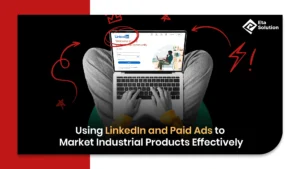
Industrial Product Marketing with LinkedIn & Paid Ads

Top Digital Marketing Strategies for Industrial Products in 2026
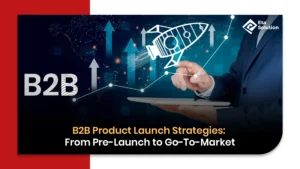
B2B Product Launch Strategies: From Pre-Launch to Go-To-Market
